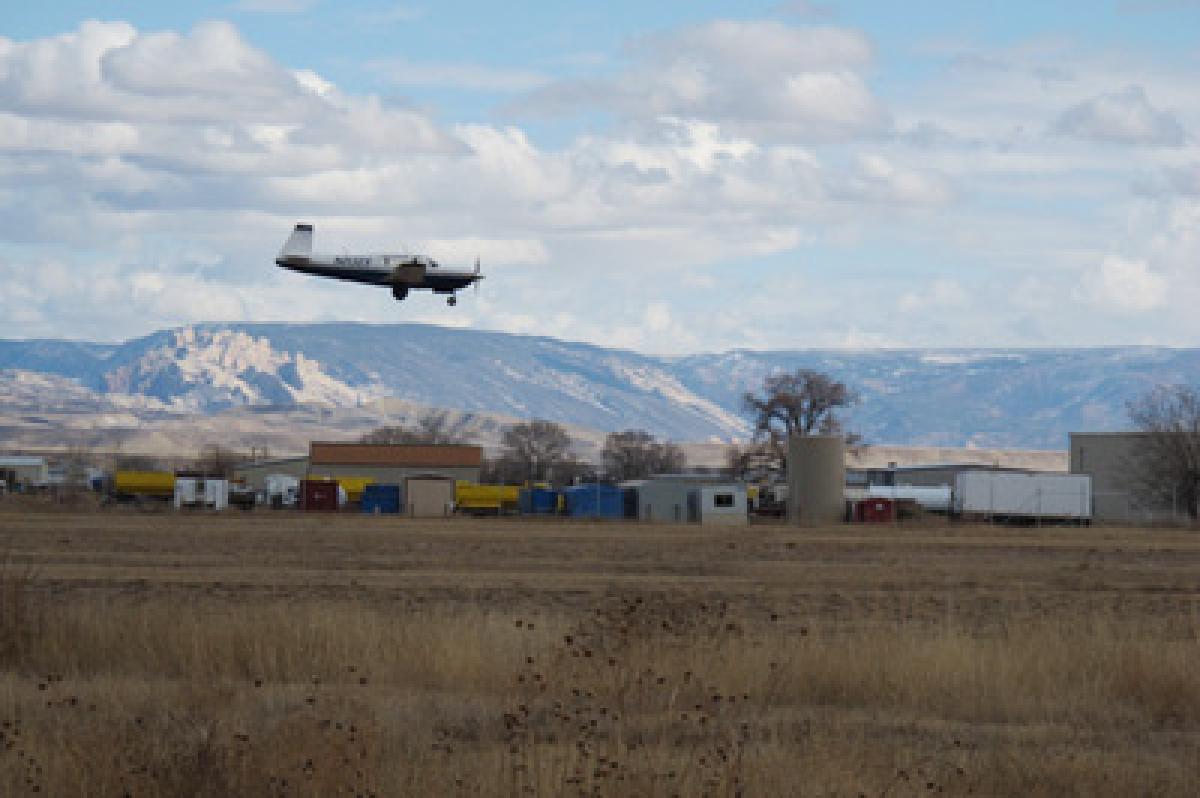A critical gap in determining the climate impact of the recent increase in US natural gas production is the lack of accurate and reliable estimates of associated emissions. In particular, the methodology used to account for fugitive methane (CH4) emissions during production is in question. Dr. Anna Karion and Dr. Colm Sweeney are the lead authors on an article accepted for publication by the American Geophysical Union that is an important step in closing the gap. The article, Methane emissions estimate from airborne measurements over a western United States natural gas field, is the result of joint research by the Cooperative Institute for Research in Environmental Sciences (CIRES), the National Oceanic & Atmospheric Administration’s Earth System Research Laboratory (NOAA/ESRL), and the University of California, Davis.
The publication focuses on methane emissions in the Uintah basin, Utah and is the first study in this region to use atmospheric measurement methods to calculate methane emissions from an aircraft. The study concludes that CH4 emissions from oil and gas production during the study period are likely to have been significantly greater than predicted by the available inventories. This finding is consistent with previous studies that have utilized atmospheric measurements to evaluate inventory estimates of oil and natural gas emissions in other regions. [Katzenstein et al., 2003; Pétron et al., 2012]
Their research adds critical information to the debate surrounding the large increase in domestic natural gas production in the US and the potential for exploration throughout the world. Natural gas has the potential to be an efficient energy source because its combustion produces more energy per carbon dioxide (CO2) molecule formed than coal or oil (177% and 140% respectively). However, leakage of natural gas to the atmosphere from the point of extraction to the point of consumption reduces the climate benefits of natural gas because the major component of natural gas is methane (CH4), a greenhouse gas that is 25 times more potent than CO2 over a 100-year time horizon. A separate study has concluded that if more than 3.2% of natural gas is emitted to the atmosphere on its way from the point of extraction to a gas-fired power plant, the electricity produced will have a larger immediate climate impact than that from a coal-fired plant. [Alvarez et al., 2012].
The methodology presented in the AGU study constructs snapshots of regional CH4 emissions by taking atmospheric measurements made in an aircraft, and using them in mass balance calculations to quantify how much methane is flowing into and out of the region. The aircraft used in the study, a Mooney M20M-TLS, was instrumented with an in situ Picarro G2301-m Flight Analyzer—a carbon dioxide (CO2), methane (CH4) and water vapor (H2O) cavity ring-down spectrometer.
”This study would not have been possible 5 years ago because an instrument simple and stable enough to make CH4 measurements on such a small plane did not exist.”
This study demonstrates the capability of their aircraft measurement methodology to be used as a scalable and valuable tool for estimating emissions from oil and gas production regions. The study also emphasizes the strong need for further atmospheric measurements to better assess inventories of CH4 emissions, track how CH4 emissions vary in time, and to compare emissions from different regions.
Methane emissions estimate from airborne measurements over a western United States natural gas field
Learn more about Dr. Anna Karion
